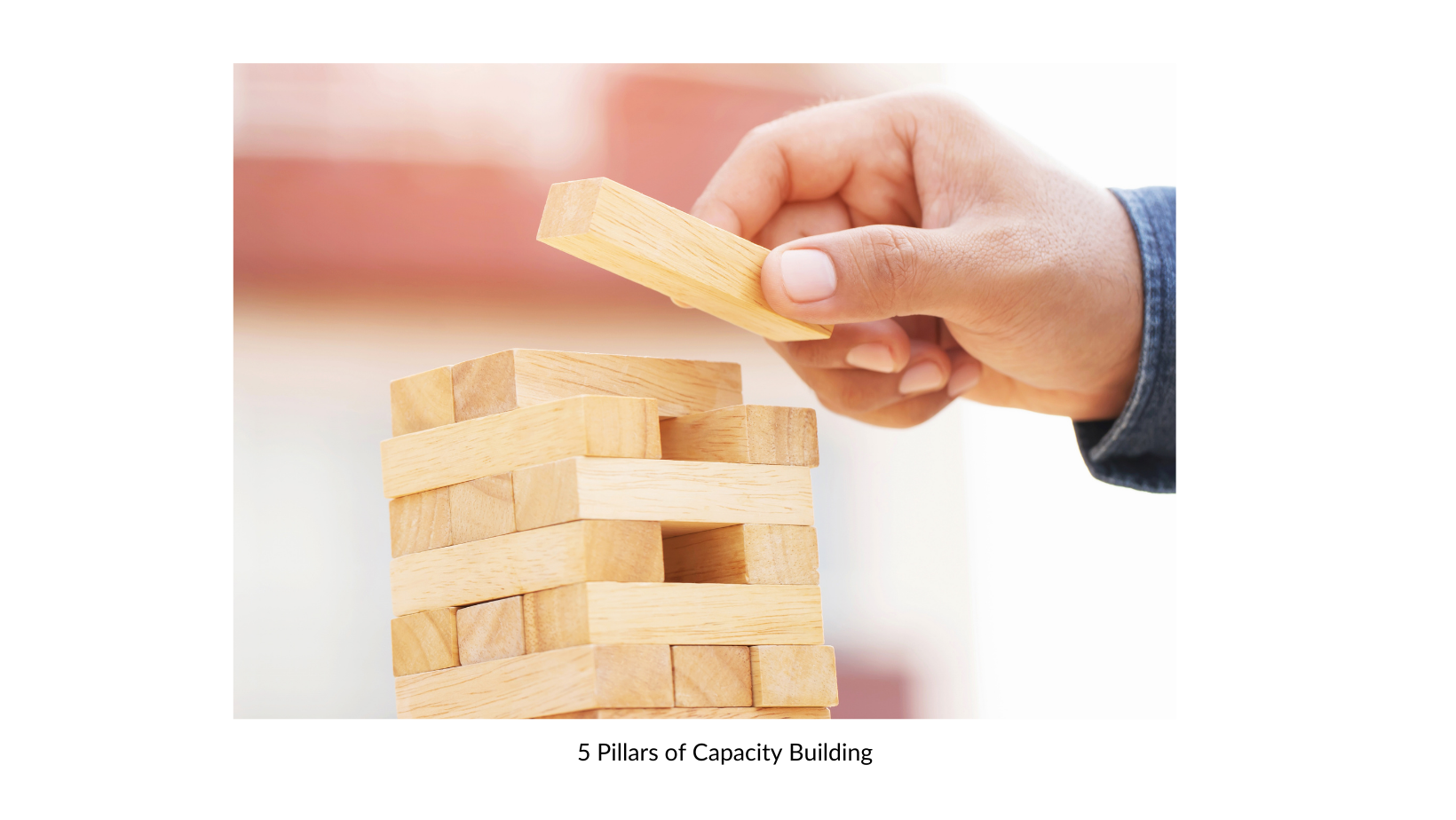
Capacity-building strategies facilitate the development of organizational infrastructure and assets needed to efficiently and effectively advance an organization’s mission long-term. Capacity building is not a short-term process. It is future-focused and ensures the organization can continue to generate social value and produce positive community outcomes well into the future.
Capacity-building efforts can include the following five focus areas:
Personnel development which equips all members of the team with the training and resources needed to complete their tasks. Building team capacity also includes leadership succession planning to explore the organization’s future needs and begin mapping out a strategy to prepare current staff or recruit new staff to fulfill these roles.
Technological development ensures that the organization has access to the hardware and software available to serve their community, measure program impact, and report the results through multiple channels of communication.
Community engagement can be a powerful, multi-faceted capacity-building tool to ensure that the organization maximizes social and human capital. Often nonprofit leaders overlook untapped talent in our communities such as senior residents with valuable knowledge and life experience or professionals that offer quality pro bono services. Community engagement can also create a future board or workforce pipeline and create opportunities for grooming future leaders and team members of the organization.
Board development can ensure that each board member has a specific role that is clearly defined and aligned with their talent, resources, and interests. Each board member should have a performance rubric for tracking and progress reports.
Finally, as the pandemic and other recent crises have demonstrated, capacity building strategies must include disaster resilience. Any organization serving vulnerable populations such as low-income families, seniors, or special needs communities should assess organizations capacity scenarios during pandemics, cyberattacks and natural disaster emergency operations. This preparation might include using your facilities as a shelter or staging area for emergency personnel, preparing non-perishable foods for distribution or purchasing generators or solar panels as back up during power failures. Obtain access to multiple buildings and vehicles across a wide radius in case your main facilities are inundated or compromised during a significant storm event or other natural disaster. Coordinate with other organizations, businesses, and building owners in the area to ensure access to multiple locations for sheltering displaced populations and for, storing and staging food.
Based on our experience, these are five of the essential capacity building focus areas that organizations must consider. Depending on your organization -the people you, serve as well as emerging trends in politics and demographics – there may be variations on the strategies presented here.
Capacity building efforts should begin with a meeting with your team, your core constituency and key stakeholders to discuss concerns about the present and future needs of your community.